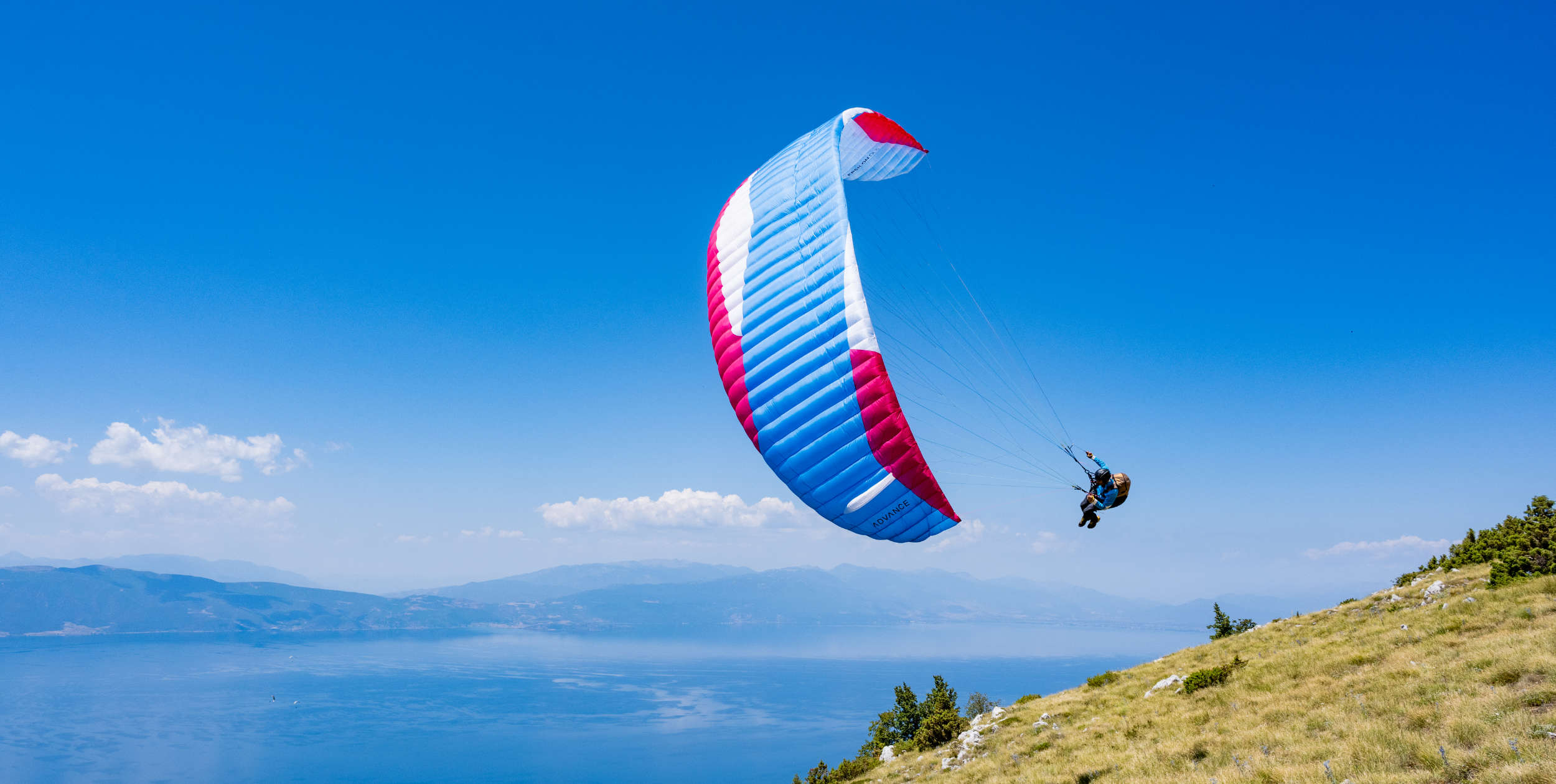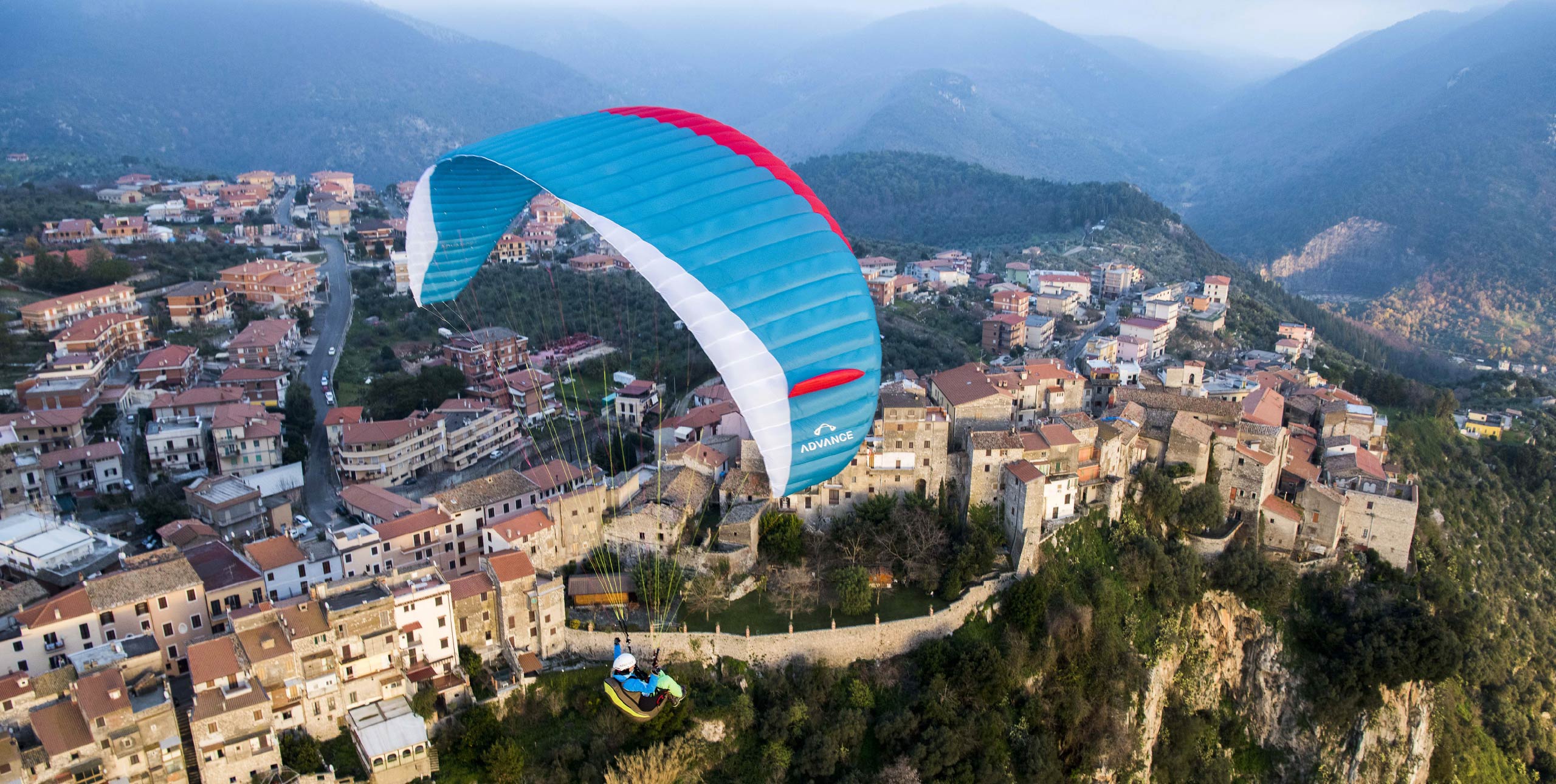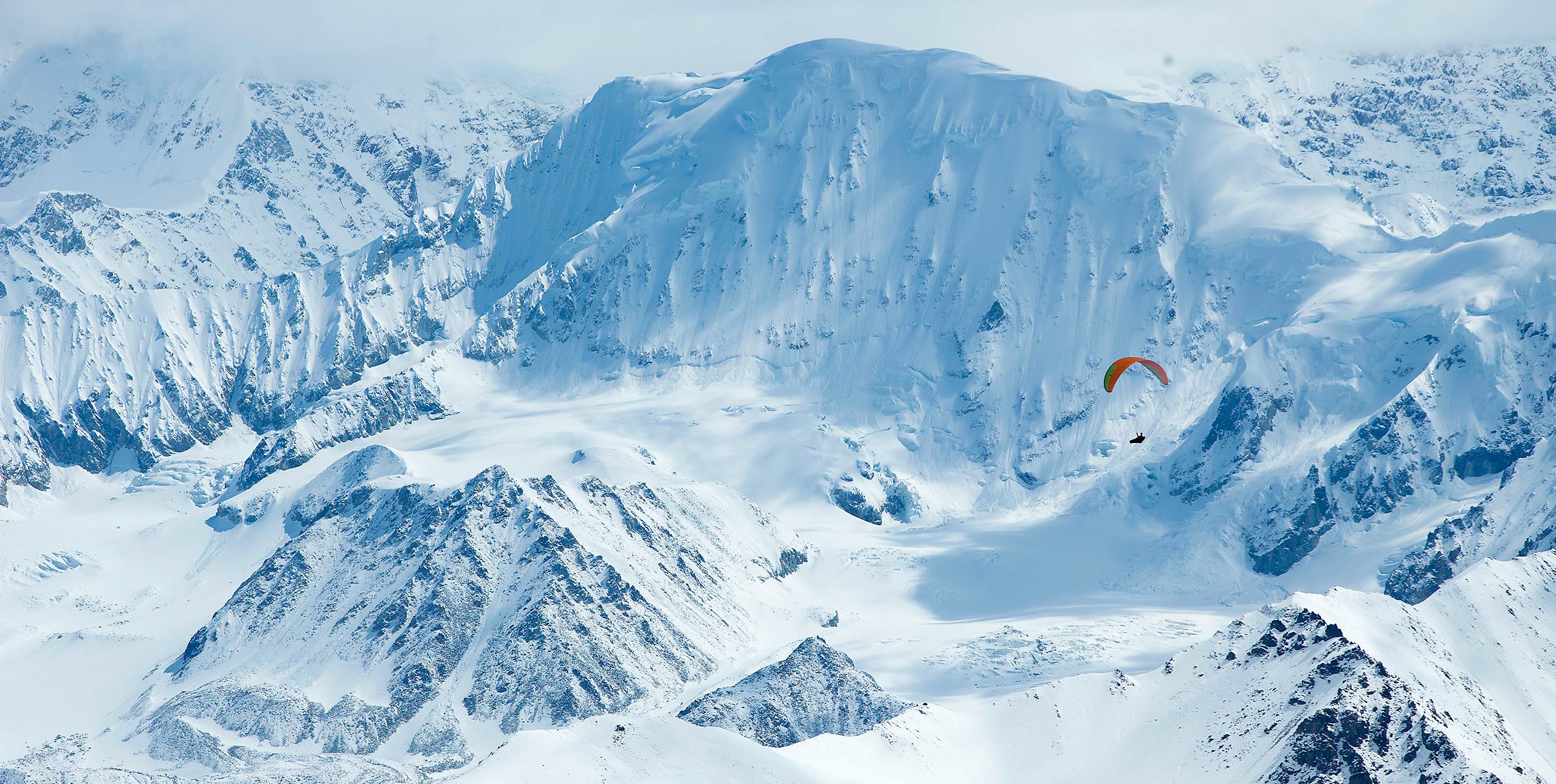
Designed for hike-and-XC and less than 3kg, Marcus King tries this new concept
We first got to see and try the Hike&Cruise when it was released at this year’s Stubai Cup in March (see XC239). The glider brings a new design innovation to paragliding by using more cells on the top surface than the bottom. This saves weight but retains (most) performance. As Dudek co-owner Wojtek Domanski explained: “We know that 70% of the performance of the glider comes from the top surface.” On our quick test flight we found a wing that is “very fun to fly. Easy to launch and immediately comfortable, there was no obvious difference in feel to a standard glider.”

Design and build
Taking a closer look, unrolling the wing you will instantly spot the design innovation. Viewed from below it looks like a very basic wing with only 21 very wide ‘cells’. On top, though, you will find 65 cells.
Inside, ribs have been removed and the internal cross-bracing redesigned to make this work. The lower surface uses mini ribs to create more ‘cells’ at the trailing edge.
The clever structure and the use of Porcher 27 gives a weight for the 22m2 of just 2.6kg. The Advance Pi 3 23 is a simpler wing with 38 cells and weighs 2.75kg.
Unlike many hike-and-fly wings the Hike&Cruise has a relatively high aspect ratio of 5.6. For comparison, the Advance Pi 3, Gin Yeti 5 and Ozone Ultralite 4 all have an AR of 4.5. This then is a glider that has been designed for thermalling and cross-country as well as flying down from your local mountain.
Despite the increased AR the wing achieves EN B, with size 25 getting EN A. Wojtek told us they could have achieved EN A on more sizes with trimming but they decided not to do this; they emphasise that the wing is not intended for novice pilots.
The lines are unsheathed Technora, but coloured, with the lower ones thick enough to make sorting on launch easy. They are attached to the risers by softlinks. These are made from 7mm Technora webbing with quality Ronstan pulleys in the speed system.
Unusually for a wing of this type there is a wooden rear-riser handle, but no connection to the Bs. It’s a bit of a shame these aren’t removable so you can simplify things if you want to. The brake handles attach via a popper and are comfortable with a stiffened area around the swivel for better contact with the wing. The brakes are set quite short so if you are used to taking a wrap you would need to lengthen them. I found using the stiffened area removed the need to wrap.
Available in three sizes it covers all-up weights from 50 to 105kg. There are no extended weight ranges as you see on some other hike-and-fly wings. The wing is available in three standard colours and is supplied with a compression inner bag and snow stakes that attach to loops on the leading edge.
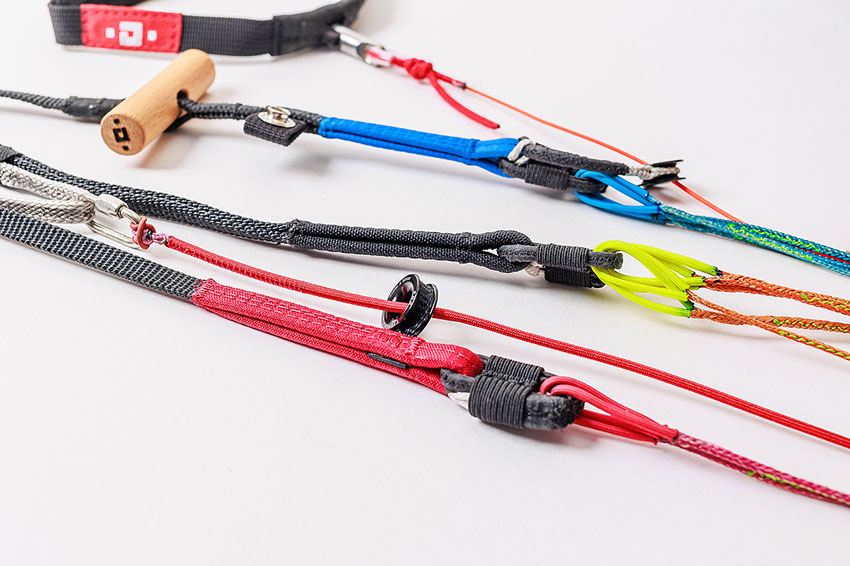
Launching
It’s important that a wing intended for hike-and-fly is easy to launch and the Hike&Cruise does not disappoint. I launched in all conditions from backwind to nil-wind and strong breezes and the wing always behaved impeccably. In still conditions it rises easily and in stronger conditions you can keep it on the ground easily until you are ready to go. Once above your head it reacts quickly to any brake input making it easy to control and play with on the ground. Let up and it will pull forward into the air.
In the air
I flew the 22 right at the top of its certified weight range using a non-pod harness and front-mount reserve when conditions were thermic. Looking up at those big cells above your head you would expect to feel a bit wobbly, but it feels cohesive and cuts into the air well. Flying it loaded the wing was dynamic but the performance is still good enough to climb in dynamic or thermic lift.
The brakes are nice and direct and have an immediate effect so you can place the wing precisely. The glider has quite a high arc and correspondingly a reasonable amount of roll, so you can flick it around easily, but it stays settled and does not roll from side to side. The high arc does mean if there is a side wind it is pulled a bit more sideways than some flatter wings but this is just something to get used to rather than a problem. The roll definitely helps make the wing feel like a little go-kart as you throw it through turns.
When thermalling you can use weightshift and less heavy braking to get it to turn flat, and I was able to make good use of early morning thermals to climb out. Wing loading will undoubtedly affect how the wing handles so choose the size that fits your use best.
On a couple of occasions I was able to head off on 20km XCs, using our local ridges. The wing shows good glide performance, on a par with mid-B XC gliders. The bar is easy to use and gives an extra 11km/h when pushed pulley to pulley. Your top speed will depend on wing-loading but the 22 at top loading feels fast. The wing stays pretty pitch stable even with full bar applied.
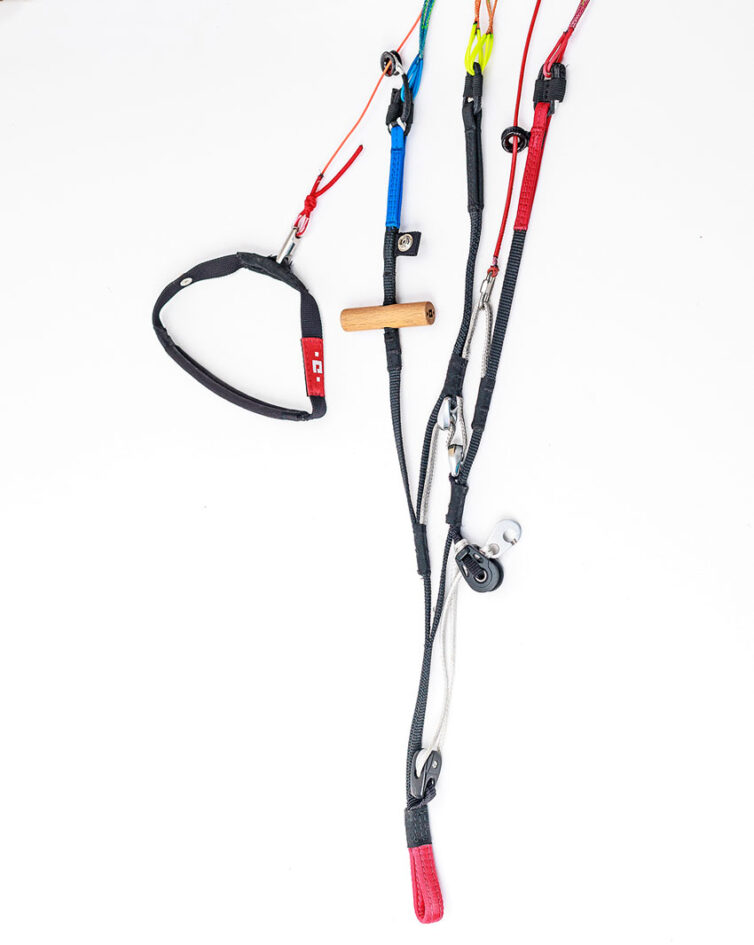
I’m not sure about the rear-riser controls though – do we need them on this type of wing? They don’t give that much information and are probably most useful for course correction. You can definitely run along the terrain fast while steering with them, though.
The wing has a separate line for big ears but no little riser. Ears are easy to pull and they come out on their own, as you would expect. Combined with bar they will get you down and away from any cloud suck.
At my loading the wing definitely has a dynamic side that had me smiling even on sleddies. It’s easy to get above the wing in wingovers, the roll helping it flick over. It drops into spirals easily but I had no problems controlling it and bleeding energy on the exits.
Landing is as you would expect from a double-surface wing with good flare authority. It’s great fun to build speed for the final swoosh, skim the grass then hit the brakes to bring you to a stop on your feet. That flare authority is especially useful when landing in no wind or on difficult terrain
The verdict
The Hike&Cruise is a super interesting wing. If your hike-and-fly involves walking rather than climbing, you get a wing that is easy to carry but has little compromise in terms of performance. Loaded slightly lower it would make a perfect travel wing and good vol-biv wing with more normal speeds, a bit better sink-rate, great performance and yet weighing the same as simpler wings. It’s always great to see innovation in our sport and hats off to Dudek for doing something new: I think they have a winner.
Manufacturer’s SPECIFICATIONS
Dudek say: “With a wide speed range, light weight and precise, agile steering, the Hike&Cruise is a great choice for pilots seeking a unique experience in the air.”
Use: hike-and-fly, travel and vol-biv
Pilot level: intermediate
Size / flat area (m²): 19, 22, 25
Certified take-off weight (kg): 50-75, 65-90, 85-105
Glider weight (kg): 2.37, 2.62, 2.86
Cells: 65/ 21
Flat aspect ratio: 5.6
Certification: EN / LTF B (25 EN-A)
Published in issue 243 (September 2023)


